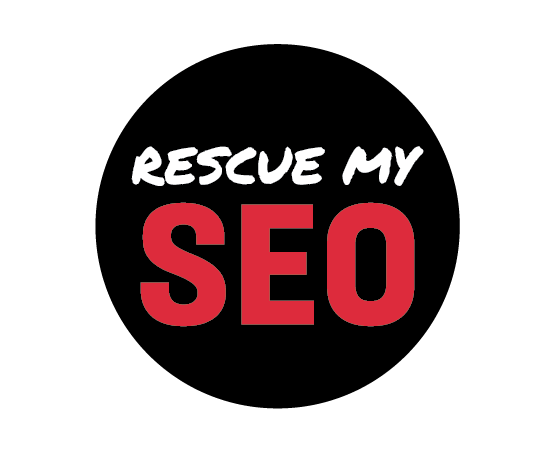
If you’re running a local business with multiple locations, you know that ranking each location on Google is the difference between a steady stream of new customers and watching prospects discover your competitors instead. At Rescue My SEO, we’ve seen firsthand how a well-executed multi-location SEO strategy can take a business from minimal visibility to dominating local search for every site you own. Let’s break down how you can do the same-without hitting the common pitfalls that keep so many businesses stuck in digital obscurity.
Why Multi-Location SEO Matters (and Where It Goes Wrong)
Local intent drives nearly half of all Google searches. When every location shines in its city’s map pack and organic search, you turn digital presence into real, measurable growth: more foot traffic, more calls, and more transactions where they matter. But too many businesses approach multi-location SEO with copy-paste shortcuts or a ‘one size fits all’ mindset-leading to duplicate content penalties, cannibalized rankings, and profiles that collect dust instead of reviews.
The Right Way: How to Rank Every Business Location
1. Build Unique, Optimized Location Pages
- Unique URLs for Each Location: Use a clear structure such as yourdomain.com/city or yourdomain.com/locations/city-name so each business gets its own spotlight. Avoid dumping all locations onto a generic “Locations” page.
- Distinct Local Content: Each page needs 200–350 words about THAT specific location-talk about local staff, community involvement, unique amenities, and location-specific offers. Do not spin city names and reuse the same copy. Google can and will filter this as duplicate content.
- Exact NAP Consistency: Prominently list Name, Address, Phone Number, matching your Google Business Profile. Set it in schema markup (
LocalBusiness) for added clarity. - Google Map Embed: Add a map for the precise location so customers (and Google) trust the listing.
- Images and Reviews: Use real photos and, if possible, fresh customer testimonials referencing that location specifically.
2. Optimize Google Business Profile (GBP) for Every Storefront
- Create/Claim a Profile for Each Location: One per address-no exceptions.
- Verify All Info is Identical: Name, Address, and Phone Number must match your site (down to suite number formatting and spelling).
- Local Services & Hours: Only show services actually performed at that site. Set custom hours if they differ.
- Geo-Specific Photos: Upload images unique to the location: signage, lobby, team, neighborhood landmarks.
- Respond to Reviews: Google rewards profiles with consistent engagement. Aim to reply to all reviews, positive or negative.
- Post Regular Updates: Fresh posts about local promotions, events, or changes in service signal that your business is active and trustworthy.
3. Manage Local Citations-Consistency is Critical!
- Submit to Major Directories: Ensure every location appears on Yelp, Yellow Pages, Apple Maps, Bing Places, and industry directories. Always review what’s auto-generated-errors are common.
- Monthly NAP Audit: Use a spreadsheet to check that each listing matches your official address/phone format. Inconsistencies confuse Google and undermine your authority.
- 30+ Citations per Location: As a rule of thumb, the more reputable listings per business, the more Google trusts your info.
4. Earn Real Local Backlinks
- Partner with Local Businesses/Charities: Sponsor or collaborate on events for local press and backlinks.
- Connect with Area Blogs and News Outlets: Pitch newsworthy angles-grand openings, sponsorships, or how your business serves the community-for mentions and links.
- Direct Links to Location Pages: Don’t send all links to your homepage-link them to the relevant city/location page to prevent SEO cannibalization.
5. Monitor Results and Adjust with Precision
- Track Organic Rankings by Location: Use Google Search Console property filters to watch clicks, impressions, and most common queries per landing page.
- Google Business Profile Insights: Review monthly stats for calls, direction requests, and website clicks per profile. If one site lags, tighten up its page, citations, and reviews.
- Target Quarterly Growth: Strive for at least 15% organic traffic growth per location each quarter. If you’re not seeing steady improvement, dig into what’s stalling search visibility.
Pitfalls to Avoid in Multi-Location SEO
- Duplicating Content Across Locations: Google will only rank one page-or potentially none-if you repeat content with minor changes.
- Fake Locations or Shared Offices: Attempting to outrank real local businesses with fake listings will backfire, risking removal of all your Google Business Profiles.
- Mixing Up NAP Info: Even a missing suite number or flipped street abbreviation can tank trust signals. Triple-check your information monthly.
- Poor Internal Linking: If you bury location pages or fail to connect them contextually, both Google and visitors will overlook them. Include clear menus and breadcrumbs to every location.
- Keyword Stuffing: Resist cramming city names and services into every heading. Focus on natural, readable content that helps the user-not just the search engine.
Getting Advanced: How to Make Each Location Dominate
- Add Local FAQs: Each city page should answer common questions unique to that area-parking, events, neighborhood advantages, etc.
- Highlight Community Involvement: Showcase photos, events, or initiatives specific to each community. Build credibility and relevance.
- Collect Location-Specific Reviews: Encourage reviews for the right location after every transaction-mention the specific city or neighborhood where possible.
- Track Calls and Form Fills per Location: Use call tracking numbers and unique page forms to attribute leads and conversions accurately.
Your Action Plan for Multi-Location SEO Success
- Build and maintain a unique content-rich landing page for every location.
- Claim, fully optimize, and update each Google Business Profile regularly.
- Secure a baseline of 30+ reputable citations per site-and audit monthly.
- Pursue fresh local backlinks every quarter to each location page.
- Monitor Google Search Console and GBP analytics weekly for granular performance insights.
Wrapping Up: Turn Locations into Search Engines Magnets
Consistent, location-specific SEO is one of the best long-term investments you can make for a growing brick-and-mortar business. Each site you operate deserves to own its city’s search and map pack-if you want a trusted partner to make it happen, Rescue My SEO specializes in affordable, data-driven strategies for local businesses serious about increasing real-world traffic with organic search.


